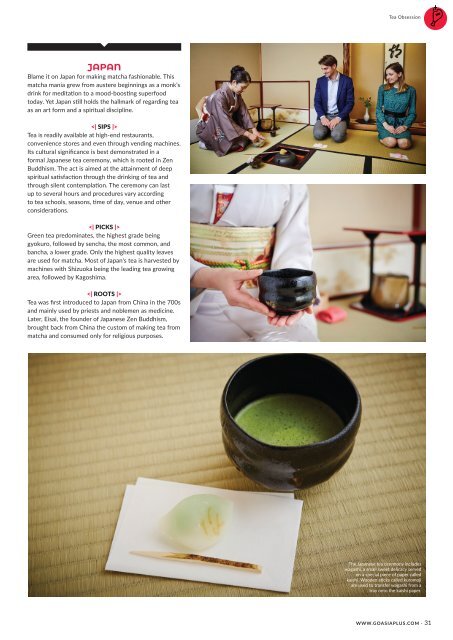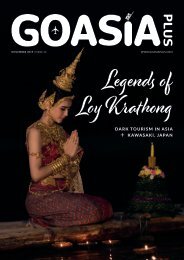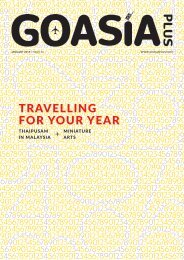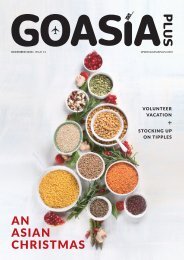GOASIAPLUS March 2018
Read stories on the origins of Thailand's most sacred festival, Songkran, destinations for book lovers in Asia as well as a peek into Vietnam's hidden island of Phu Quoc
Read stories on the origins of Thailand's most sacred festival, Songkran, destinations for book lovers in Asia as well as a peek into Vietnam's hidden island of Phu Quoc
Create successful ePaper yourself
Turn your PDF publications into a flip-book with our unique Google optimized e-Paper software.
Tea Obsession<br />
JAPAN<br />
Blame it on Japan for making matcha fashionable. This<br />
matcha mania grew from austere beginnings as a monk’s<br />
drink for meditation to a mood-boosting superfood<br />
today. Yet Japan still holds the hallmark of regarding tea<br />
as an art form and a spiritual discipline.<br />
<br />
Tea is readily available at high-end restaurants,<br />
convenience stores and even through vending machines.<br />
Its cultural significance is best demonstrated in a<br />
formal Japanese tea ceremony, which is rooted in Zen<br />
Buddhism. The act is aimed at the attainment of deep<br />
spiritual satisfaction through the drinking of tea and<br />
through silent contemplation. The ceremony can last<br />
up to several hours and procedures vary according<br />
to tea schools, seasons, time of day, venue and other<br />
considerations.<br />
<br />
Green tea predominates, the highest grade being<br />
gyokuro, followed by sencha, the most common, and<br />
bancha, a lower grade. Only the highest quality leaves<br />
are used for matcha. Most of Japan's tea is harvested by<br />
machines with Shizuoka being the leading tea growing<br />
area, followed by Kagoshima.<br />
<br />
Tea was first introduced to Japan from China in the 700s<br />
and mainly used by priests and noblemen as medicine.<br />
Later, Eisai, the founder of Japanese Zen Buddhism,<br />
brought back from China the custom of making tea from<br />
matcha and consumed only for religious purposes.<br />
The Japanese tea ceremony includes<br />
wagashi, a small sweet delicacy served<br />
on a special piece of paper called<br />
kaishi. Wooden sticks called kuromoji<br />
are used to transfer wagashi from a<br />
tray onto the kaishi paper.<br />
WWW.<strong>GOASIAPLUS</strong>.COM · 31


















